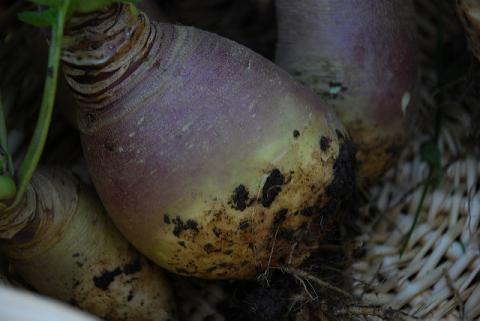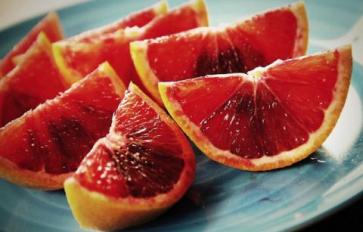
Admittedly, the rutabaga is a homely vegetable with a fun-to-say name. You’ve probably seen them in the produce section, and quickly walked by, avoiding a direct look at them in case they might turn into fairytale trolls out to get you. So call them by their other name, swedes, and keep reading.
The swede is in the Brassica family, probably created from the marriage of some 17th-century Bohemian turnips that bandied about with wild cabbage. We won’t hold that against them, because the rutabaga is a tremendous source of energy for both humans and animals. They are often used as forage crops in no-till fields.
Despite its free-growing spirit, the rutabaga can be a little bitter if you eat it raw. But it turns delightfully sweet if you cook it. It takes on a golden glow and is less starchy than a potato. You can remove the peel from a raw turnip with a vegetable peeler or paring knife, and slice the vegetable into thin strips with a mandolin slicer. I like to pop the whole thing into the crock pot and let it cook, then mash or peel at the end. Add some milk or coconut milk, season and enjoy. You can chop the root and add to soups or stews. Don’t overlook the leaves – chop and add to the menu as you would chard leaves or turnip greens.
The root vegetable is filled with healthy nutrients like potassium, calcium, iron and zinc. And it has antioxidants including glucosinolates, which are compounds that may reduce tumor growth, and Vitamin C and carotenoids that counteract free-radicals. They are high in fiber and low in calories.
How do you like it now? Feel free to look directly at it next time you visit the grocery store. Take one home and try it.
Photo Credit: "Rutabagas" by Johnathan Nightingale is licensed under CC BY 2.0








